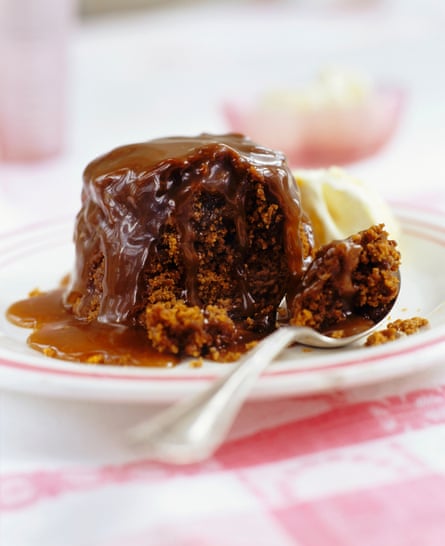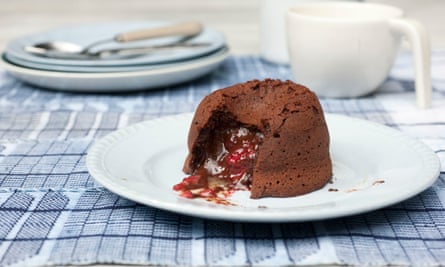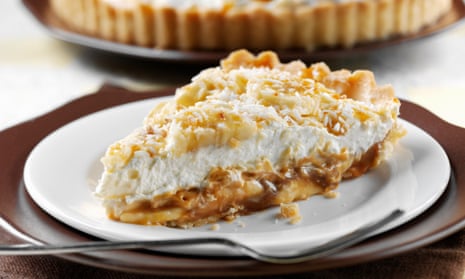We’ve a lot to thank Nigel Mackenzie for. Back in 1972, the restaurateur, who has died this week, gifted banoffee pie to the world. That classic combination – sticky, rich toffee, soft banana and folds of whipped cream – was the result of trial and error in the kitchen of his pub, The Hungry Monk. He and his head chef tried apples and clementines, before settling upon banana. They called it Banoffi, that became banoffee, and the rest is history (aplofee just wouldn’t have had the same ring). To commemorate the treasured memory of the banoffee pie, we’ve looked at the backstory of some other favourite puds.
All in the name
Fancy a slice of “hydropathic pudding”? We thought not. Yet this was the original name for the glorious centrepiece of many a picnic table, more happily known as summer pudding. In the 19th century, it was offered to the sick in health spas, as part of a special diet. Today this heady mixture of vibrant soft berries, briefly cooked in juice-soaked bread, has become one of the best ways of using up a glut of summer fruit – transformed into a thing of beauty. At London’s River Café, you’ll pay £10 for a slice drenched in Valpolicella. And chef Skye Gyngell has taken the pudding to the next level, spurning stale bread and making a sponge from scratch to house the fruit.
Sticky fingers

In that typical British way, puddings have become the source of historical dispute. Take the sticky toffee pudding, for example, which has the most complex backstory you could hope to find. The acclaimed Sharrow Bay hotel in Cumbria claims Francis Coulson first invented it in the 1970s, evolving a colleague’s experience of a Canadian sponge pudding soaked in maple syrup. Or was it Lancashire-based Peggy Martin? She is also credited with the original STP – based on a recipe from two Canadian servicemen who stayed at her hotel during the war. Her secret, apparently, lies in mashing the dates, for that perfect texture. And the Cotswolds-based Pudding Club claims its founders came up with the real thing. “Our mixture is more like a batter, which gets steamed for hours, rather than baked. It’s quite different.” One senses hackles rising.
Fondant Fancy

The legendary French chef Michel Bras likes to think he invented the chocolate fondant in 1981: patenting his recipe for individual cakes, baked with frozen ganache inside that turned into a runny centre. But according to Lucky Peach, he was pipped to the post by a Texan housewife in the 60s, who came second in a baking contest with her gloriously named Tunnel of Fudge Cake. For some reason it didn’t take off – but luckily for fondant lovers everywhere, a few years later top New York chef Jean-Georges Vongerichten had a bit of a kitchen accident. He took a chocolate cake out of the oven too early, realised it tasted even better with a melting middle – and put it straight on his menu. Which just goes to show: even the worst kitchen disaster can become a kitchen triumph, because who doesn’t love a pudding that comes with its own lake of sauce?
The Rotters’ Club
For a creation with a real mystery behind it – who better to ask than the Pudding Club, which must boast the widest repertoire of desserts in the land. They’ve managed to collect recipes from all sorts of sources – including one sent in by a customer in the mid 1980s. Owner Simon Coombe says the resulting Lord Randall’s pudding is “totally unique”: a rich steamed sponge made with marmalade and dried apricots. Lord Randall was the philandering hero of an 18th-century ballad who was murdered by his own lover. The pudding, Mr Coombe insists, has nothing to do with “such a rotter”: but somehow the double-crossing Lord will be for ever remembered in sticky marmalade form. Revenge has never been so sweet.

Comments (…)
Sign in or create your Guardian account to join the discussion